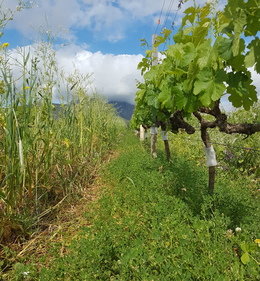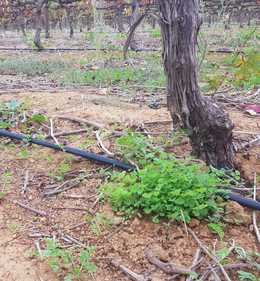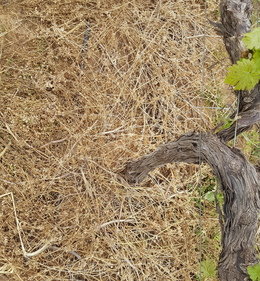Increase resilience with living mulches
*As published in Wineland Magazine’s April 2021 edition.
Agriculture is one of the most challenging economic sectors in South Africa. The importance of having a resilient farming operation has become apparent with the constant challenges climate change and globalisation present. Producers must now be able to compete on an international level and mitigate the challenges of climate change, all the while remaining sustainable. Regenerative agriculture, of which cover crops are a large part, provides sustainable solutions to these challenges. Many producers have turned to cover-cropping their vineyards after recognising the numerous soil health benefits it provides. They no longer plant cover crops exclusively in their work rows; cover-cropping plant rows has now become common practice and is often seen as essential. Producers are starting to see the benefits of a living mulch, especially as herbicides become more expensive, herbicide deregistration affects availability and conscious consumerism gains momentum. Planting cover crops on plant rows is a way to prepare for the seemingly inevitable day herbicides such as glyphosate are banned as has already happened in many countries.
Ideally the living mulch should be established in March or early April by spreading the seed directly underneath each dripper. Establishing cover crops well ahead of the rainy season is possible as vineyard irrigation will sustain them before it starts to rain. Early establishment gives the cover crops a head start, which is critical for successful weed suppression. It allows the living mulch stolons to spread from the drippers’ wetting areas and cover the areas that have not yet received any rain or irrigation. This is essential for effective weed suppression as by the time it starts to rain in April and May most of the plant row should be covered, thus suppressing weeds by overshadowing them. Grasses can be selectively controlled with legume cover crops, but if broadleaf weeds manage to germinate, they could be more challenging to control. In this case a broad-spectrum herbicide can be applied after the living mulch has set viable seed. At the end of its life cycle the cover crop provides a layer of residue in late spring and summer which conserves moisture and suppresses summer weeds. Medics and clovers are the most common species used as living mulches as both have a low growth height. They are both also winter annuals, but re-establish themselves in the following year, allowing producers to keep their establishment costs as low as possible. Establishing cover crops yearly on plant rows is also more labour intensive than in the work rows. It is however recommended to establish the plant rows for two to three consecutive years to allow the cover crops to build up a good uniform seed bank. Medics and clovers are both legumes, so they can form a symbiotic relationship with rhizobium bacteria to fix nitrogen. Most of the nitrogen is made available in the root zone of the vines when the biomass starts decomposing in spring. This allows producers to substitute inorganic nitrogen fertiliser application and reduce input costs and soil acidification. Rhizobia tend to be widespread in soils but are not all equally effective. It is recommended that the seed be inoculated with new and improved strains to allow the legumes to fix the greatest amount of nitrogen. In scenarios where vines are too vigorous, the seed should not be inoculated.
Before introducing regenerative mulches across their entire farm, producers should do small-scale trials to determine the best establishment methods for their circumstances and thus increase their chance of success. Regenerative agriculture practices should be implemented as a long-term strategy to increase soil health and overall sustainability, and the earlier they are introduced the better. It’s vital for producers to see how cover crops, especially living mulches, can make their organisations more resilient.

A successful living mulch at Kanonkop Wine Estate.

A living mulch, 4 weeks after establishment

A layer of living mulch residue, providing coverage during summer
IVAN JANSEN VAN RENSBURG
Tel: 082 301 5934

